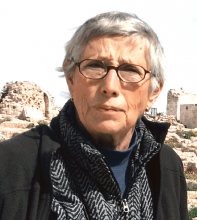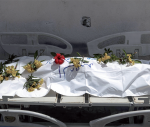You are here
‘To turn the tide of war against IS’
Dec 24,2014 - Last updated at Dec 24,2014
The cost of the US-led air campaign against the Islamic State has surpassed the $1 billion mark.
US and allied fliers have flown more than 13,000 combat missions and dropped 4,000 munitions. Expenditures have been for refuelling aircraft, intelligence, reconnaissance and patrols over areas where bombs are not dropped.
The US and its allies could have saved this money if the US and its Western allies, in particular, had taken IS seriously when it sent its fighters across the Iraqi border into Syria in 2012.
The US is making the same mistake with Jabhat Al Nusra, Al Qaeda’s official Syrian affiliate, which has also been taking and holding territory.
In recent days, US proclaimed proudly that its war planes killed two top IS commanders, Abd Al Basit, head of IS military operations in Iraq, and Hajj Mutazz, deputy to IS chief Abu Baker Al Baghdadi.
In November, US aircraft conducted a strike on a convoy and slew Auf Abdel Rahman Elefery, or Abu Suja, known as one of Baghdadi’s closest confidants.
Former senior US officers complained that the air support provided by the US and its partners, including Jordan, involves only a dozen strikes a day rather than the scores of strikes needed to seriously weaken IS.
While the air war has managed to contain IS to a certain extent, ground forces provide the main challenge to IS.
Iraqi ground forces, including the Kurdish peshmerga militia, are not capable of countering IS fighters who are well led, well armed, well paid, highly motivated and constantly reinforced with new recruits from both abroad and local communities.
Nevertheless, this past week, 8,000 Iraqi Kurdish peshmerga militiamen routed IS fighters besieging Yezidis on Mount Sinjar, in northwest Iraq, where several thousand men women and children had been trapped for months.
The peshmerga mounted a two-pronged attack to open a corridor to permit the delivery of supplies and allow the Yezidis and others who had taken refuge there to flee to the autonomous Kurdish region.
Although there was close coordination between coalition air support and Kurdish ground forces, peshmerga commanders said that they did not have the arms and munitions they needed.
This is probably why the peshmerga have not been able to capture the town of Sinjar where more Yezidis are still held by IS and at risk.
Over the past few months, the Kurds have received tonnes of advanced weapons from a variety of countries, including the US, Britain and Germany, but these arms are not sufficient for the monumental task before the fighters.
The Kurdish defeat of IS on Mount Sinjar amounted to a major reverse for the armed cult which counts on a reputation of invincibility to undermine the morale of its enemies, as well as on brutality, which it uses to frighten its foes into submission.
The Sinjar victory was, however, not a triumph for all Kurdish fighters, which are not united and operating under a single command and control structure.
The victors were peshmerga loyal to the Kurdish Democratic Party (KDP) headed by Massoud Barzani based in Erbil.
Units affiliated with the Patriotic Union of Kurdistan (PUK) headed by Jalal Talabani, whose power base is in Suleimaniya, were not engaged. They are based both in the east and in Kirkuk, south of the Kurdish autonomous region.
The PUK complains that its fighters received fewer arms than the KDP forces, which control the Kurdish regional government.
Although the US has supplied some weapons for PUK peshmerga, most arms apparently come from Iran and the separatist Turkish Kurdish Workers Party (PKK).
The KDP has, equally controversially, allied itself with Ankara, regarded by many if not most Kurds as their chief regional enemy.
Iraqi Prime Minister Haidar Al Abadi sacked corrupt army commanders, but he cannot make up the might of the Iraqi army, 270,000 strong, as half its units are said to be not operational.
Furthermore, there are 50,000 “ghost soldiers”, names included on payment and mess lists by crooked officers who collect salaries and rations for non-existent soldiers.
Morale is low. Some units have been strengthened by US training, but this has not made up for years of mismanagement and corruption.
Shiite militias, particularly those backed by Iran, are the most efficient pro-government fighting forces, but Shiite volunteers who have joined the fight against IS started deserting recently because they have no food or munitions.
The failure to feed and arm these elements rests with the Shiite fundamentalist-dominated government in Baghdad.
It has also been slow to arm Sunni tribesmen in strategic Anbar province to the west of the capital, who have been standing up to IS.
Although hundreds of their members were murdered by IS fighters, the government has been reluctant to back these Sunni tribesmen, fearing that they may turn against Baghdad.
This is a chance Abadi must take if the government is going to turn the tide of war against IS.
Without the Sunni tribes in Anbar and Salaheddin, and Sunni villagers to the east, Baghdad cannot, ultimately, win the war. And Baghdad cannot convince Sunnis to join the battle against IS until Sunnis trust the government.













